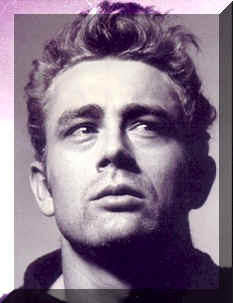
Education is India’s greatest strength and its greatest weakness. There are millions of children in fields, on the road, in factories—everywhere but in school.
You have it in your power to change that. All they need is a little bit of your time
— Jaideep Bose Narendra Jadhav’s father, a Class IV worker with the Bombay Port Trust, was semi-literate, his mother not even that. Jadhav grew up in a Mumbai slum, his formal education started at an unremarkable municipal school and culminated in a PhD in economics from a US university.
He rose to become chief economist and principal adviser at the Reserve Bank of India, and is now vice chancellor of Pune University—the same city where his dalit ancestors were forced to leave before sundown and sweep their own polluting shadow with a broom
Nirjharini Bhattacharjee swept the corridors of her school and cleaned the cups to pay her fees and feed her family. She was an exceptionally bright child and her teachers encouraged her to keep at her studies. She grew up to join Rishi Bankim College in Naihati, West Bengal, did her Master's, and cleared the National Eligibility Test (NET), qualifying as a lecturer. Today, she is principal of her college, and thinks nothing of picking up a broom or wiping the blackboard clean
E Balaguruswamy was born to a small farmer in a hard-up Tamil Nadu village. Their home had no electricity but it did have a precious supply of candles, which the young boy used up to study late into the night. He became vice-chancellor of Anna University, is currently a member of the Union Public Service Commission and the author of several best-selling books on software languages
Vilind Shah’s lot was similar to Balaguruswamy’s, only far worse. Born into an impoverished farming family in Amreli, Gujarat, he went blind at three, was sent to a special school and would probably have lost his way but for the kindness of a gentleman who noticed the boy’s potential and paid for him to go to college in Mumbai. Shah is now a professor of history at the University of Chicago
Vinayak Lohani went to IIM-Calcutta. When he graduated, he did not compete at placement interviews with blue-chip companies. Instead, he went out and opened a school for street children in Joka, where IIM-C has its campus, on the outskirts of Kolkata
Over the next few months, we will bring you stories that will inspire you, warm your heart, move you to tears—and, we hope, to action. They will be stories of hope defeating despair. Of children who struggled through years of grinding poverty to put themselves through school and college and who are today leading scientists, professors, engineers, doctors, bureaucrats and CEOs. Of adults who have given up mouth-watering salaries to dedicate themselves to teaching the untaught so that they may have a fighting chance.
Education is modern India's greatest leveler and its redemption. It is the tide that lifts every boat. We are all prisoners of birth, but education has the power to snap the meanest bonds of economic and social enslavement. It is the route out of the caste ghetto, the path out of the slum, the road to the high table. A degree in engineering or medicine gives the child of a mill hand as much opportunity as any son or daughter of privilege.
At home and at work, chances are that your domestic help, driver, dhobi, liftman, watchman and peon are doing whatever it takes to send their children to an ‘English-medium’ school, buy them a second-hand computer, pay for their tuition, get them trained in IT. They dream of empowering their child with the kind of ambition they never dared have. And when the child excels in a board exam, gets into a big college or lands a good job, all those years of hardship and uncertainty melt away. In that defining moment there is a reinforcement of faith in the future—that it is possible to break the cycle of inequity by honourable means.
It is a well-worn cliche that ours is a country of glaring contradictions. Yes, we have one of the biggest education systems in the world—1.2 million schools, 6.3 million teachers and 290 million students, which in itself is more than the population of every country in the world except China, India and the US. And yes, literacy has grown from 28% in 1961 to 68% today. But the other end of the scale is crumbling. We still have over 287 million illiterate people (from the age of five)—the largest in any country, and larger than the population of Indians (five and above) at the time of Independence.
If India is today considered an emerging superpower and if the stereotype has shifted from snakecharmer to IT whiz, some of the credit must go to our education system, to our IITs and IIMs, and to grassroots initiatives like the midday meal scheme and the Navodaya Vidyalayas. This system has produced one of the world’s largest pools of science and tech graduates and created a robust middle class. And with well-educated Indians in influential positions in the developed world, notably the US, India has a voice that commands respect and attention on the global stage.
And yet, the many successes cannot hide the system’s sprawling underbelly. Millions of underprivileged youth have no access whatsoever to any form of schooling: of the 460 million between 6 and 24 years, 170 million are not in the education system
The drop-out rate is depressing: a staggering 90% don’t make it to college.
There are thousands of schools and colleges, both state-run and private, that provide no real education, and we don’t need empirical proof to bear this out. There is enough and more anecdotal evidence
There’s a massive deficit of teachers. And of the 4.7 million-odd who teach between classes I and VIII, almost half have not studied beyond senior secondary
Infrastructure is dismal: almost a third of primary and middle schools don’t have pucca buildings, 87% have no computers Ironically, our greatest source of strength is threatening to become our biggest weakness. Our education system is choking. Strategically, we are in danger of losing our global competitive advantage. Entrepreneurs have found that education is a great new business, and there’s nothing wrong with that so long as there is a genuine intent to provide quality education. But private education comes at a price, and the question is, can it reach children in slums and villages? If it can, can they afford it? The answer quite simply is no. As aspirations rise and disparities widen, and as the need for equity assumes even greater urgency, there is only one solution: to redeem the classroom.
For all of us at The Times of India, education is a near-obsessive priority. In many of our editions, we have more correspondents covering education than any other beat. We believe the time has now come for us to do more than just write about it. We think we can play a role in helping to bring education to the boy who in the pouring rain hawks pirated books at the street lights, the girl who runs after you with a bunch of roses she needs to sell before the day is out.
It is with a deep sense of mission that we are launching Teach India. There are thousands of good men and women who are doing exemplary work by teaching children who cannot afford a ‘good school’, children who survive on the brutal fringes of society, for whom living is a daily struggle and learning a luxury. We cannot even hope to equal their efforts.
What we hope to do, instead, is bring together those who want to make a difference and those already making a difference in education. So many of us genuinely want to give back to society and do something for the less fortunate. Many of us are doing things in our own limited, unorganised way by writing a cheque to an orphanage or paying the school fees of the house help’s child. But what if you want to go beyond the cheque book and give of your time as well? Are you faced with the dilemma of where to begin?
Teach India could be the answer. It taps into a powerful combination of urge and need. It seeks to put those of you who have the urge to lend a helping hand in touch with NGOs who work with underprivileged children and are in need of volunteers. It’s for you to decide what you would like to teach, and how much of your time you want to commit. And it is for the NGOs to decide the skills they require most.
Every survey has shown that an overwhelming majority of our readers belongs to the elite – technically termed SEC A, the highest socio-economic class. They have money; more importantly, they have had an education. What could be more satisfying than being able to share your knowledge and experience with children who may be wise beyond their years, but have never been taught how to write their name, or told why there is day and night, or why an apple falls to the ground instead of soaring to the sky? Do you think you can spare two hours a week — or even two hours a fortnight — to teach, to make a difference? You could be a college student, a bureaucrat, a doctor, a lawyer, an actor, an architect, a police officer, a pilot, a housewife, a retired professor. It doesn’t matter, as long as you take your commitment seriously. What’s more, we suspect it’ll be great fun—and you might end up learning a thing or two.
In the second phase of Teach India, which will unfold in a few months’ time, we will support a newly formed non-profit organisation, Teach For India, with board members such as Rajat Gupta, Anu Agha and Shaheen Mistry of Akanksha, to enlist some of the country’s brightest graduates who are willing to give two years of their lives to teaching underprivileged children. A similar program in the US called Teach For America (TFA) has been an astounding success. Today, students graduating from the most prestigious colleges vie to be accepted in this program, and TFA alumni have gone on to become influential voices in education policy in corporate America and in US administrations.
When we launched India Poised on the first day of the last year, we found that in vast swathes of our society, public governance—most worryingly, in education and health—was on the verge of collapse. Our Lead India campaign, which we rolled out on the sixtieth anniversary of our Independence, was born out of our belief that the country was in dire need of a clean and effective leadership. Lead India, we believe, struck a chord. (We are committed to the initiative and hope to carry the lessons of the first year into our next Lead India campaign.) In the course of our India Poised and Lead India campaigns, we have felt a growing need to focus on education, especially at the primary level, and among the underprivileged. Education has been a life-altering force for millions of Indians, and it will be our endeavour to bring the joys of learning to many more, and perhaps in the process, help level the playing field. The boy at the street lights could be a future vice chancellor, the girl with the roses could blossom into a principal. Think of how much joy it would give you to know that you played a part in making that happen. For all of us at The Times of India, an initiative such as this—which we hope will grow into a movement—gives us a meaning beyond ourselves, a greater purpose in life. We believe it’ll do the same for you.



























16 comments:
**but tell me keshi, why do u get so upset when ppl misunderstand u?
This one's supposed to be a growing psycho doc. A tight spanking across her small ass would set her right for sure.
She is really a fossil.
Why are almost ALL blogger girls ugly??
At 27 March 2008 08:57, Blogger Solitaire said...
Hahah..you are so funny!
Dating? You know what? I never have gone out on a date! Serious...when I was in college, all that was a strict no no..And these days kids talk about it like as if they were born to date.
I do feel like a fossil when I read such things..
Dating etiquette? GAWD! I dunno what all that is about. If I did go out on a date, something I do might be misinterpreted just because I do not know the goddamn rules! That is scary!
Solitaire:
I have promised myself that I will be more fashion conscious when I lose the extra ten pounds. That, I do not think will happen in this life.
And why are so many FAT??
ENG CRICKETER said...
A sign on the sit down toilet for English visitors at the Wankhede Stadium in Bombay India reads.
Sahib.
Please stand high above the seat, as the Crabs in here jump fifteen feet.
Sunday, 6 July 2008 07:30:00 PM EST
Ok, guys, this is the wh*re who called Jim a jerk.
This her profile. Clearly a bitter case.
As soon as K sat next time,, almost everyone in the class 'coughed' in unison!! I was soooooo embarrassed,,,and out of my mind, that all of a sudden, I stood up. I could feel my knees getting weak,,I felt my feet trembling. Mr. N asked the class to be quiet, and me to sit down. Since I obviously had not embarrassed myself ENOUGH,,, I started to cry, and then looked at K and said, "YOU did THIS, didn't you ???" I was CRUSHED (pun intended). (I think I even pee'd my pants a little)...
At 5 March 2008 15:51, Blogger carolinagal said...
Good job compiling this beautiful list! These are all my favs too...(all the ones I know of atleast)!
By the way, why do you publish these moronic comments from this Jim character? He seems like such a jerk!!
ty Carolinagal HUGS!
**By the way, why do you publish these moronic comments from this Jim character?
Keshi replied:
"I want the world to see what a moronic jerk he is..thats why I publish his dumb comments. He disgraces ALL Indians."
It's these NRI's and expatriates who are causing the most damage.
I think there's enough material on Keshi's blog to get her extradited and arrested on defamation charges.
That's a very subtle and sly girl you are dealing with.
The truth sets you free.
The fact is that Caraf could never stand Keshi (and rightly so), and neither could Keshi live up to Caraf.
Read the piquant lie below: "I did'nt mention Caraf because so many already know her." I mean, if you want to bullshit, at least bullshit well. We are not exactly a bunch of idiots you know. We don't see you, we see through you.
And don't miss what K has written about Saby. Does not sound like someone who took pity on him and stuff.
At 1 April 2006 14:45, Blogger Keshi said...
~~Saby
**www.carafdances.clogspot.com
she's simply one of the BEST ever! I love Caraf for her natural beauty of the heart...she's a born writer and I love her patriotism and friendliness. I love her careless nature abt freaks on the net and how she handles em :) Caraf has always been one of my favs and the only reason I didnt mention her in my post is cos she's known by many of us here.
Why do I think Saby is one HOT blogger :) cos u r HONEST be it rude or not, u say what u want to say...and I like that nature in u cos not many of us here do that. And u can handle criticism with a great sense of humor and u always seems to guide us all with ur witty comments..there's some lesson in all of ur comments though some of em may sound rude :)
Luv ya Saby!
Keshi.
We want to see a mud fight between Caraf and Keshi and may Caraf win.
Wet mud.
Make it clay.
I'm sure Caraf will be back someday. We wait patiently.
Caraf was back for her birthday
she thanked me
see older posts
I put up her pic
it is always necessary to learn, it is the key to truth and to freedom
visit http://realimaginations.blogspot.com/
Solitaire
Very inspiring examples.
I wish your beautiful country
and all children in India
a lot of blessings!
Hi Saby
hi saby just wondering how u are kathy
Post a Comment